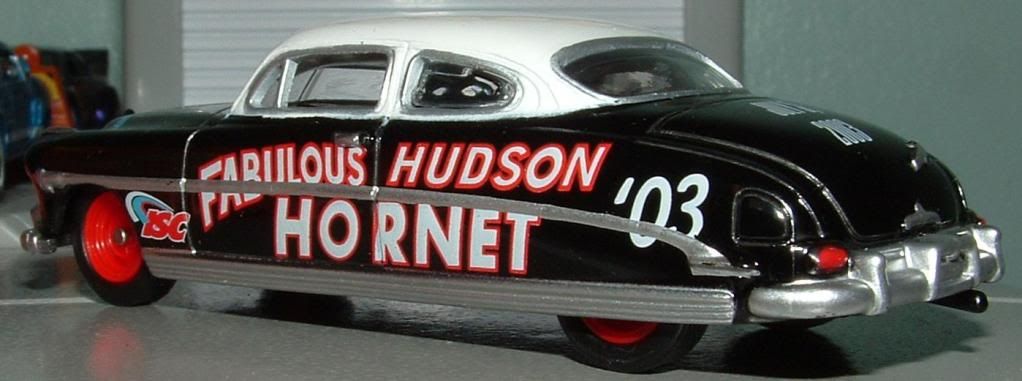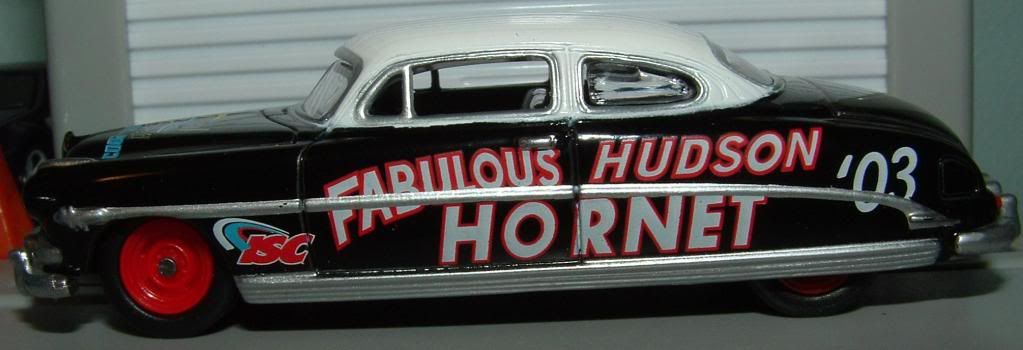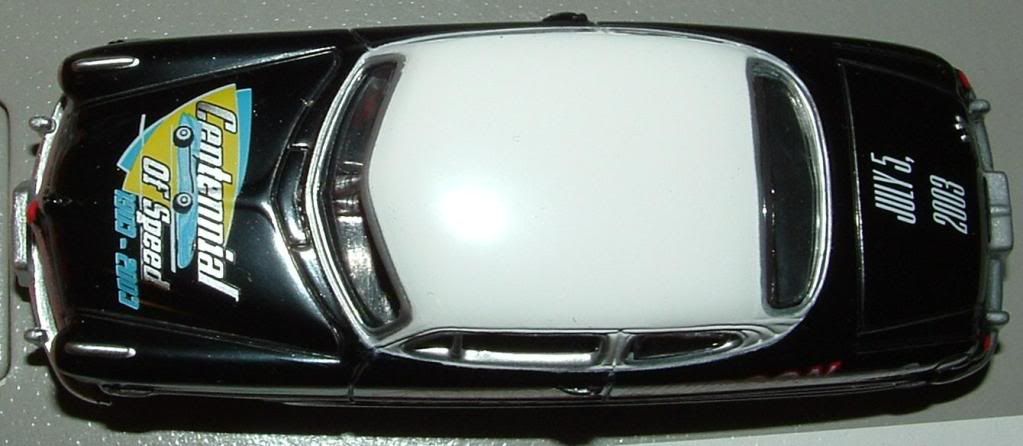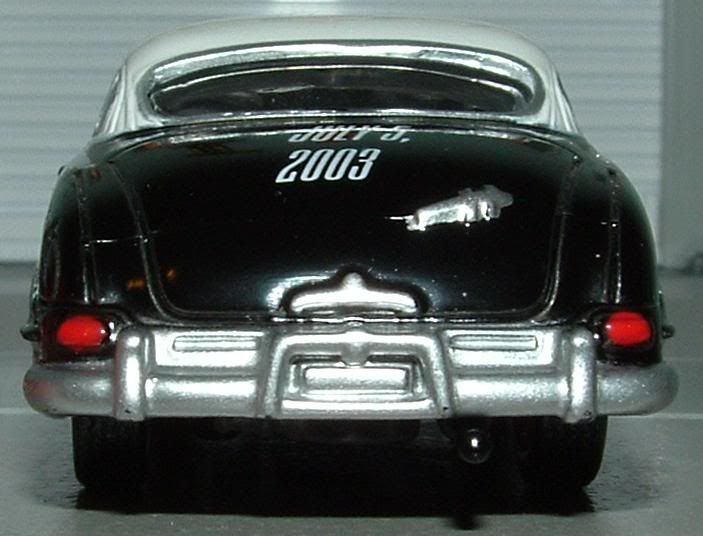
A blog focusing on 1/64 diecast from such popular brands as Hot Wheels, Matchbox, Johnny Lightning, M2 Machines, GreenLight, Tomica, Yat Ming, Majorette, MotorMax, Siku, Corgi, Guisval, Playart, Ertl, Zylmex, Racing Champions, & many more. Swifty's Garage features a daily Car Of The Day and news updates from your favorite brands!
Wednesday, November 16, 2011
Car Of The Day: November 16, 2011
Today's car of the day is Team Caliber's 1951 Hudson Hornet.
The Hudson Hornet is an automobile that was produced by the Hudson Motor Car Company of Detroit, Michigan between 1951 and 1954. The Hornet was also built by American Motors Corporation (AMC) in Kenosha, Wisconsin and marketed under the Hudson brand between 1955 and 1957.
The first-generation Hudson Hornets featured a functional "step-down" design with dropped floorpan and a chassis with a lower center of gravity than contemporary vehicles that helped the car handle well – a bonus for racing. The Hornet's lower and sleeker look was accented by streamlined styling. The car's "unique, low slung appearance and silky handling earned Hudson an image that – for many buyers – eclipsed luxury marques like Cadillac's."
The second-generation Hudson Hornets became a restyled Nash that was badge engineered as a Hudson.
For more information and pictures of the real car please visit: Hudson Hornet
As my Grandpa had a Bali Blue '51 Hornet back in the 1950s, I've made collecting Hornets a subfocus in my collection, and until a few weeks ago this was the only one I was aware of in small scale that I was missing. Thanks to an RAOK from Billy Kingsley (thanks Billy!) I now have this one! Hindsight is always a pain, but one can't help to think that had the following chain of events happened, Hudson would still be with us to this day: Hudson and Nash convince Packard to merge with them instead of Studebaker (the original plan was to have Hudson and Nash merge and Studebaker and Packard merge, and then they would merge together, but this fell through). Considering Studebaker's dire finacial condition in 1954, Packard's cash reserves would have had far more impact at AMC. Nash (specifically Rambler) as a low-cost car competing with Chevy and Ford. Packard would be the top end of the spectrum competing against Cadillac and Lincoln, and that would leave Hudson in the territory occupied by Mercury, Dodge, and Oldsmobile. Considering AMC managed to make it until the late '80s with what little they had.... you never know. But speculation is just that and we'll never know for sure.
The Hornet, introduced for the 1951 model year, was based on Hudson's "step-down" design that was first seen in the 1948 model year on the Commodore. The design merged body and frame into a single structure, with the floor pan recessed between the car's frame rails instead of sitting on top of the frame. Thus one "stepped down" into a Hudson. The step-down chassis's "lower center of gravity...was both functional and stylish. The car not only handled well, but treated its six passengers to a sumptuous ride. The low-slung look also had a sleekness about it that was accentuated by the nearly enclosed rear wheels."
Hudson Hornets were available as a two-door coupe, four-door sedan, a convertible and a hardtop coupe. The models were priced the same as Commodore Eight, which was priced from US$2,543 to $3,099.
All Hornets were powered by Hudson's high-compression straight-six "H-145" engine. An L-head (flathead or sidevalve) design, at 308 cu in (5.0 L) it was the "largest [displacement] six-cylinder engine in the world" at the time. It had a two-barrel carburetor and produced 145 hp (108 kW) at 3800 rpm and 275 lb·ft (373 N·m) of torque. The engine was capable of far more power in the hands of precision tuners, including Marshall Teague, who claimed he could get 112 miles per hour (180.2 km/h) from an AAA- or NASCAR-certified stock Hornet, as well as Hudson engineers who developed "severe usage" options (thinly disguised racing parts). The combination of the Hudson engine with overall road-ability of the Hornets, plus the fact these cars were over engineered and over built, made them unbeatable in competition on the dirt and the very few paved tracks of the 1950s. The newly introduced "Twin H-Power" was available in November 1951 as a Dealer installed option at the cost of $85.60. An electric clock was standard.
Hudson Hornet 1951 model year production totaled 43,656 units.
Subscribe to:
Post Comments (Atom)






No comments:
Post a Comment